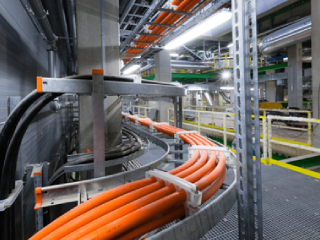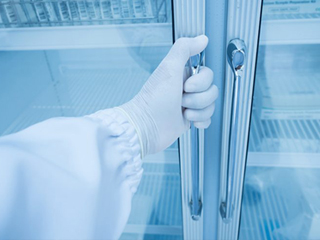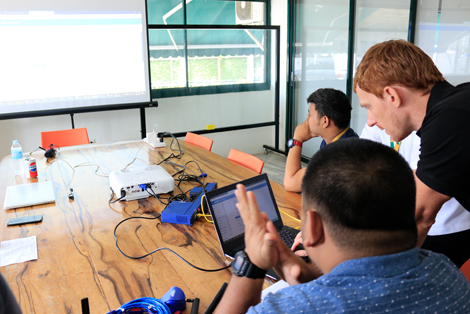 Power Monitoring in the Data Center is one of the top considerations when building this type of facility to effectively manage and monitor power within the data center. Considering this, and making the right decisions regarding power management will improve data center efficiency and the lifespan of the servers and other IT equipment. Overlooking power monitoring, on the other hand, can lead to increased costs, lower efficiency, and a higher carbon footprint.
Power Monitoring in the Data Center is one of the top considerations when building this type of facility to effectively manage and monitor power within the data center. Considering this, and making the right decisions regarding power management will improve data center efficiency and the lifespan of the servers and other IT equipment. Overlooking power monitoring, on the other hand, can lead to increased costs, lower efficiency, and a higher carbon footprint.
You Can’t Manage What You Can’t Monitor!
In order to optimize the data center power consumption, you need to have the ability to monitor not only power but the whole data center environment. This will allow you to manage the environmental conditions to suit your particular equipment requirements. Combine this data with effective power monitoring and you can fine-tune the data center to run at its most optimal level maximizing your Power Usage Efficiency (PUE).
Power Usage Efficiency (PUE)
In order to calculate your PUE, you will need to take power readings at various points along your power chain. First, you will need to monitor the power consumption of the whole data center including all IT and non-IT loads (lights, cooling, etc). This can be done at your main power panel. You will also need to monitor at the rack/PDU level in order to know what your IT load power consumption is.
 These two numbers (Total load and Total IT load) are then divided to give a ratio of power spent on IT vs power spent on cooling. The lower this number the more efficiently your data center is utilizing the power. For example, if I were to be spending 100Amp on IT load and 50Amp on cooling I would have a total load of 150Amp. 150/100 gives me a PUE of 1.5, meaning for every 1amp I spend on IT load I spend 0.5amp on cooling it. A good PUE number would be in the region of 1.3. If you are in a cold climate and can avail of “free cooling” from outside air being brought into the data center PUE numbers of 1.2 are possible.
These two numbers (Total load and Total IT load) are then divided to give a ratio of power spent on IT vs power spent on cooling. The lower this number the more efficiently your data center is utilizing the power. For example, if I were to be spending 100Amp on IT load and 50Amp on cooling I would have a total load of 150Amp. 150/100 gives me a PUE of 1.5, meaning for every 1amp I spend on IT load I spend 0.5amp on cooling it. A good PUE number would be in the region of 1.3. If you are in a cold climate and can avail of “free cooling” from outside air being brought into the data center PUE numbers of 1.2 are possible.
PDU Level Monitoring

Power monitoring could be done at an aggregate PDU level (for example, one power meter for the main power line coming into each row) or at an individual “in cabinet” level. Monitoring power at PDU or aggregate PDU level not only gives the ability to calculate your PUE numbers but also gives data center administrators an overview of the power loads so they can ensure that loads are distributed evenly across the facility.
The advantage of in rack PDU level monitoring is that these PDU’s often come with additional features such as power switching and environmental monitoring sensors. This allows closer monitoring and an overview of what’s happening inside each rack. Remember if you can’t monitor it, you can’t manage it!
Importance of Avoiding Downtime

Having a complete picture of your power chain from source to rack to PDU gives an accurate overview of the power system. Voltage, KW, KW/H, and Amperage data are displayed, allowing you to see where the system is less efficient than it could be. This can prevent main breakers tripping, and overloads which result in costly downtime. By employing intelligent, switched PDU’s you gain remote power management for individual outlets.
Power Monitoring System in Data Center
Monitoring systems are available from many of the well-known data center providers such as AKCP. The AKCP power monitoring system has several advantages over many other systems. They provide a device that will upgrade any existing power strip to a smart, intelligent monitored PDU, meaning it gives a value for money, the cost-effective upgrade path for existing data centers. The system also includes various patent-pending technologies such as in cabinet Fire Suppression Systems and distributed boot sequencing. Drawing on 30+ years of experience in SNMP enabled sensor monitoring for the data center and combining this expertise with power distribution and a world-class DCIM software that integrates with access control systems for physical security and IP based CCTV systems you not only get a complete power monitoring system but environmental and security as well.
Managing the power in your data center through the AKCP system is automated with power numbers being collected at a central point in AKCPro Server DCIM software and analyzed to automatically calculate PUE numbers. Track total data center consumption, identify power-hungry racks, monitor UPS systems via SNMP virtual sensors, and much more.
Benefits of Power Monitoring in Data Center
By combining environmental and power data together you can fine-tune your data center cooling to ensure that you are always running most efficiently, without exceeding ASHRAE recommended temperatures for your racks (64.4°F – 80.6°F). Ensuring servers are running at the correct temperature not only increases their lifespan but helps keep them running at their most optimum level lowering the power they consume and the heat that they generate.
- Monitoring systems such as the one available from AKCP, give a wealth of information, but also analyze and alert based on user-defined thresholds. Receive E-mail, SNMP traps, SMS messages, activate alarms, and actuate relay actions based on a sensor status.
- AKCPro Server monitoring software gives the facility to monitor and manage your UPS battery systems, ensuring healthy batteries and a reliable backup power source. Monitoring the battery’s internal resistance, battery cycles and in the event of power outages, the battery time remains based on current power consumption. Making sure that your UPS batteries are in tip-top condition will be repaid when power disruptions occur.
- By lowering energy costs you save money on your operational overheads and qualify for certain Energy stars and green certifications by lowering your carbon footprint.




